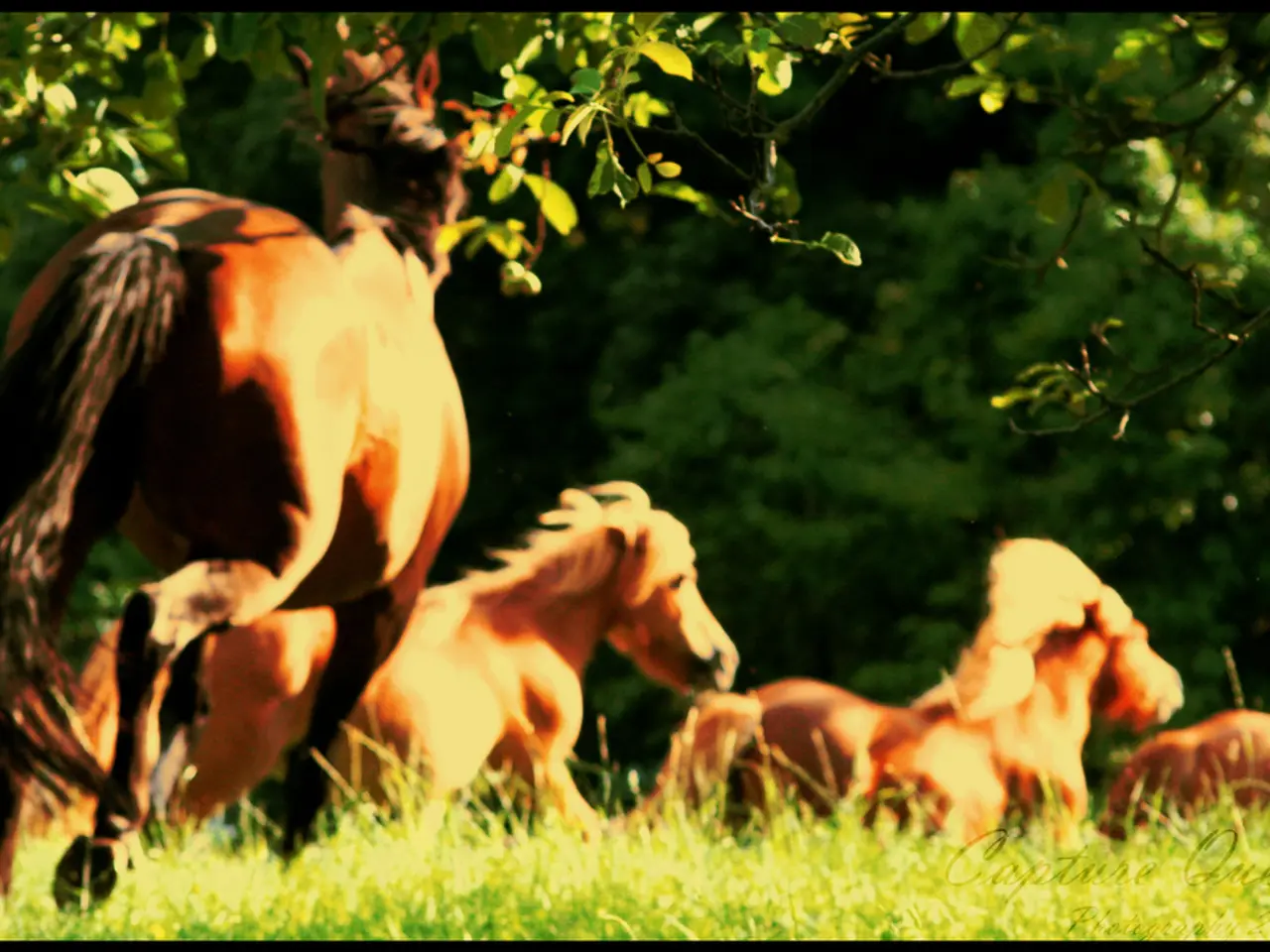U.S. Wild Horse Numbers Soar: Assessing the Environmental Impact
In the vast landscapes of the American West, a centuries-old presence continues to stir both admiration and controversy. We're talking about wild horses, descendants of domesticated horses brought over by Spanish colonisers. Today, their numbers have surged beyond what is considered balanced in the ecosystem, leading to a complex issue that demands attention.
The American Wild Horse Campaign, a non-profit organisation, focuses on preserving these majestic creatures while ensuring they coexist harmoniously with the environment. They advocate for more robust and effective fertility treatments, keeping wild horses on the range or off Herd Management Areas.
However, the sheer magnitude of wild horse numbers and their non-native presence has wreaked havoc on the environment. The current wild horse and burro population is at 90,000, far beyond the Appropriate Management Level (AML) of approximately 30,000. This overpopulation depletes water sources faster than they can replenish, and in desert environments, it further depletes already limited food and water resources.
Unmanaged free-roaming horses can cause changes in plant community structure, composition, and diversity, affecting wildlife habitat. Horses pull grass and plants out by the root, slowing down their regrowth. This is particularly concerning considering the American West is currently experiencing a "megadrought."
The Bureau of Land Management (BLM) in the USA is involved in the administration of wild horses in Herd Management Areas. By law, the BLM is required to mitigate wild horse populations so that they don't exceed the AML. However, the road ahead in managing wild horses and conserving the parched landscapes of the American West is challenging, with no quick fix in sight for an ever-mounting problem.
The BLM corrals horses and keeps them on public lands or in facilities for training or adoption. However, the number of animals who are not adopted far exceeds those who are. This leads to a significant cost for taxpayers, with the care for the contained horses costing around $100 million a year.
If wild horse populations were managed like cattle and sheep, the BLM could manage the land for regrowth after a grazing schedule. This is a controversial solution, with wild horse advocates citing traumatic roundup methods and conditions, including the ban of helicopter roundups that break up family groups.
One notable exception is the Wind River Wild Horse Sanctuary, the only one of its kind in the U.S. that sits on Native land. The sanctuary, run by Jess Oldham and his family since 2016, offers a unique approach to wild horse management, balancing conservation and care.
Despite the challenges, it's crucial to remember that the romanticised narratives often portrayed in Hollywood do not always reflect the reality of the fast-growing wild horse population and its impact on the environment. Many wild horse advocates have a romanticised view of the American West, often described in idealised terms. As we navigate this complex issue, it's essential to find a balance that respects the majesty of these animals while preserving the fragile ecosystems they inhabit.
Read also:
- Peptide YY (PYY): Exploring its Role in Appetite Suppression, Intestinal Health, and Cognitive Links
- Toddler Health: Rotavirus Signs, Origins, and Potential Complications
- Digestive issues and heart discomfort: Root causes and associated health conditions
- House Infernos: Deadly Hazards Surpassing the Flames








